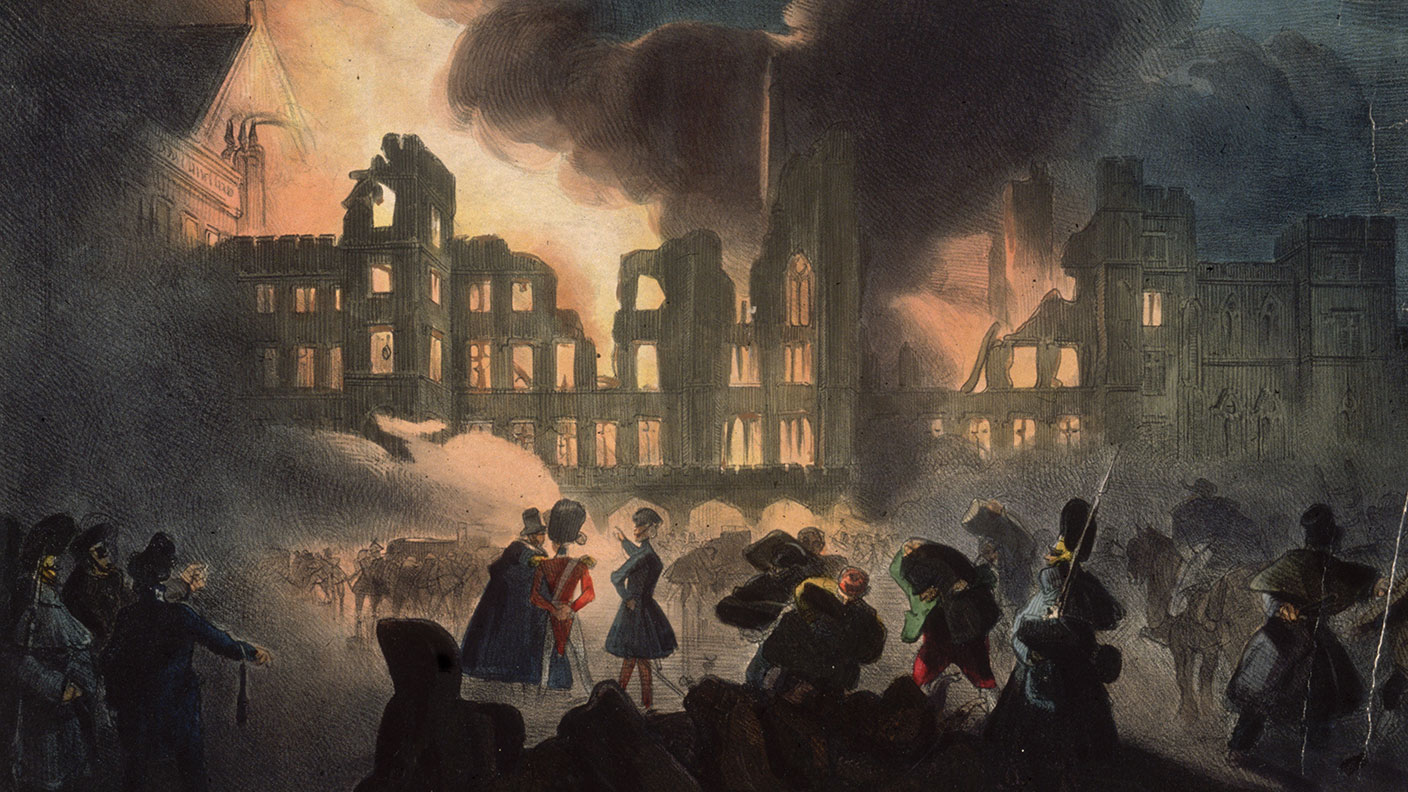16 October 1834: Houses of Parliament burn down
An attempt to modernise Parliament's system of accounting for debt led to both Houses being destroyed by fire on this day in 1834.


The current chancellor would probably like nothing more than to see records on government borrowing go up in smoke. And that is exactly what happened 180 years ago along with most of the medieval Palace of Westminster.
In 1826, the Exchequer had done away with the ancient system of using tally sticks for accounting purposes. A tally stick was broken in half when a debt was issued, and brought together again when the debt was repaid. But by the 19th century, enough people could read and write, making the system redundant.
In a fit of clearing out in 1834, the Exchequer ordered two cartloads of tally sticks to be burned. The Clerk of Works thought the two stoves under the House of Lords would be perfect for the job, and hired two workmen to carry out the Exchequer's orders.
MoneyWeek
Subscribe to MoneyWeek today and get your first six magazine issues absolutely FREE

Sign up to Money Morning
Don't miss the latest investment and personal finances news, market analysis, plus money-saving tips with our free twice-daily newsletter
Don't miss the latest investment and personal finances news, market analysis, plus money-saving tips with our free twice-daily newsletter
Visitors to the Palace of Westminster that afternoon on 16 October expressed concern that heat and smoke was rising up through the floor. But the workmen pressed on regardless, cramming tally sticks into the fires. At 5pm, the workmen clocked off and went home.
An hour later, the alarm was raised – the Houses of Parliament were on fire! But it was too late; the fire was by now out of control. Crowds, including the artist JMW Turner, lined the streets, river banks and bridges to watch the old palace be engulfed in the blaze.
Thanks to the determined efforts of firefighters and volunteers, Westminster Hall was saved. Its roof was doused with water, preserving it from the flames. The Jewel Tower, the Undercroft Chapel, the Cloisters and the Chapter House of St Stephen's also survived as remnants of the old palace. But both chambers were lost.
The architect Charles Barry won a public competition to design the new Palace of Westminster. Work began in 1840 in the perpendicular gothic style and cost £2m roughly £180m in today's money. Construction lasted more than 30 years, by which time the famous clock tower had risen from the ashes, with Big Ben nestled inside.
Get the latest financial news, insights and expert analysis from our award-winning MoneyWeek team, to help you understand what really matters when it comes to your finances.

-
 31 August 1957: the Federation of Malaya declares independence from the UK
31 August 1957: the Federation of Malaya declares independence from the UKFeatures On this day in 1957, after ten years of preparation, the Federation of Malaya became an independent nation.
-
 13 April 1960: the first satellite navigation system is launched
13 April 1960: the first satellite navigation system is launchedFeatures On this day in 1960, Nasa sent the Transit 1B satellite into orbit to provide positioning for the US Navy’s fleet of Polaris ballistic missile submarines.
-
 9 April 1838: National Gallery opens in Trafalgar Square
9 April 1838: National Gallery opens in Trafalgar SquareFeatures On this day in 1838, William Wilkins’ new National Gallery building in Trafalgar Square opened to the public.
-
3 March 1962: British Antarctic Territory is created
Features On this day in 1962, Britain formed the British Antarctic Territory administered from the Falkland Islands.
-
10 March 2000: the dotcom bubble peaks
Features Tech mania fanned by the dawning of the internet age inflated the dotcom bubble to maximum extent, on this day in 2000.
-
9 March 1776: Adam Smith publishes 'The Wealth of Nations'
Features On this day in 1776, Adam Smith, the “father of modern economics”, published his hugely influential book The Wealth of Nations.
-
 8 March 1817: the New York Stock Exchange is formed
8 March 1817: the New York Stock Exchange is formedFeatures On this day in 1817, a group of brokers moved out of a New York coffee house to form what would become the biggest stock exchange in the world.
-
7 March 1969: Queen Elizabeth II officially opens the Victoria Line
Features On this day in 1969, Queen Elizabeth II took only her second trip on the tube to officially open the underground’s newest line – the Victoria Line.

